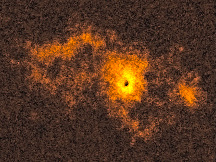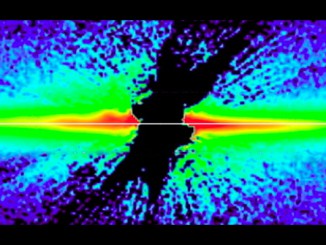The spiral galaxy M61, mistaken for a comet by Charles Messier in 1779, is an anchor tenant of the Virgo galaxy cluster, a beehive of star birth with a massive nuclear cluster and a supermassive 5-million-solar-mass black hole at its core. It is classified as a starburst galaxy with an active galactic nucleus. One of the largest members of the Virgo Cluster, an assembly of more than a thousand galaxies that, in turn, is part of the Virgo Supercluster, M61 is easily visible in amateur instruments despite its 50 million light year distance. But the galaxy’s full glory is revealed in larger instruments, like this shot captured by the European Southern Observatory in 2019.




